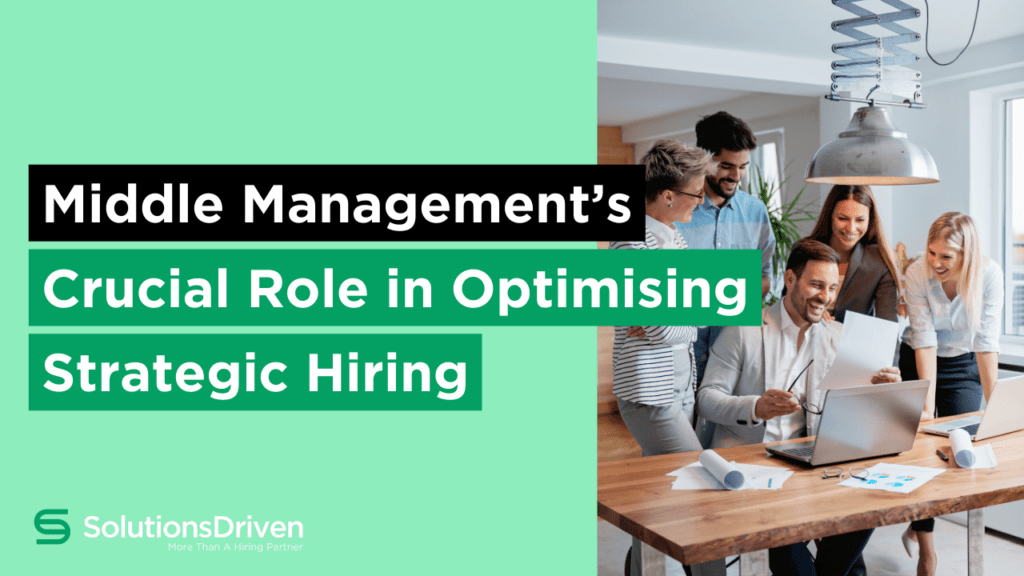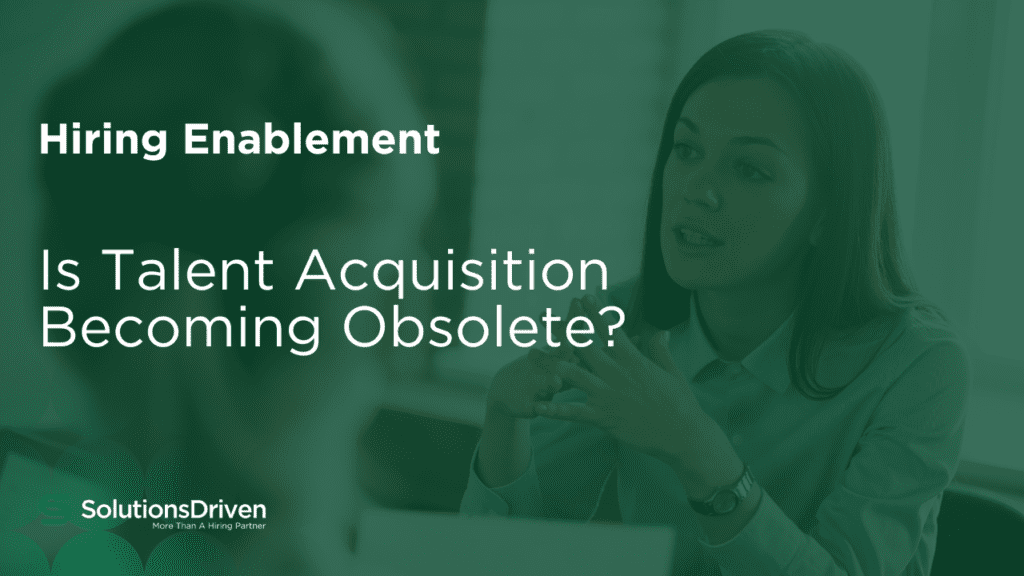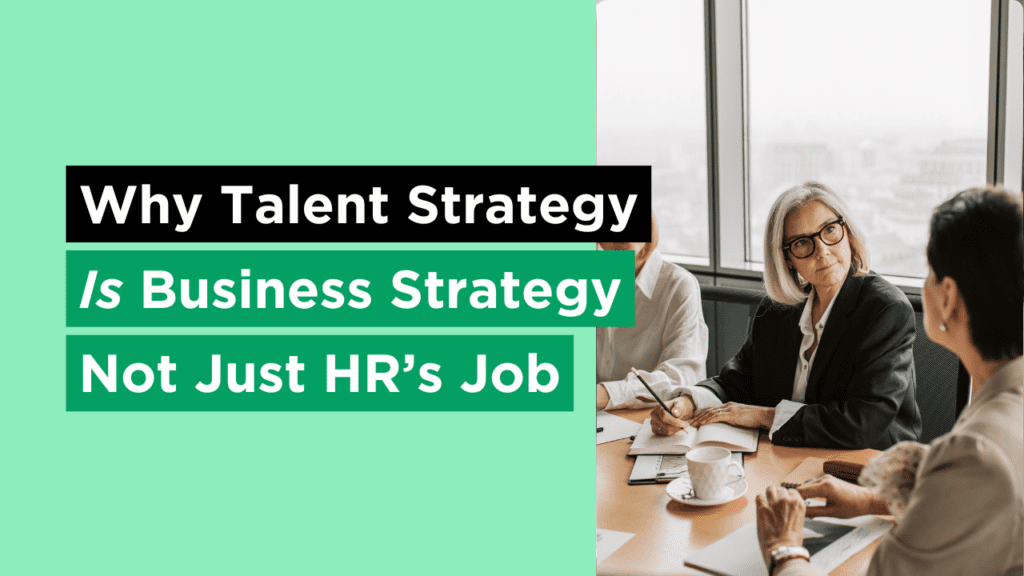To be the first to hear about our latest blogs, whitepaper releases, hiring enablement podcast episodes and get exclusive event invites, join our Exclusive Hiring Enablement Community.
Strategic hiring is no longer just about filling a vacancy or acquiring a set of skills; it’s about creating a dynamic, adaptable, and forward-thinking workforce. The age-old formula of hiring is undergoing a substantial shift, and organisations are now recognising the need to hire not just for what they need today, but for what they’ll need tomorrow.
As we explored in our recent white paper, Empowering Middle Management: The Key to Unlocking Organisational Potential, the heart of this transformation lies in empowering the often overlooked but critically important segment of your company – middle management. Middle managers are the bridge that connects strategy with execution, vision with reality. They’re the linchpins who translate top-level decisions into front-line actions. And as such, empowering these crucial players has become a strategic imperative for navigating the future landscape of hiring.
With the right tools, resources, and freedom, middle managers can become the driving force behind your company’s success in the ever-evolving corporate landscape. In this blog will delve into the necessity of middle management empowerment and how it can shape the future of strategic hiring.
The Evolution of Strategic Hiring
Traditional hiring practices – which believe it or not, can be traced back as far as ancient empires like Egypt – have evolved significantly over the years. In the early 1970s, recruitment methods were largely centred around newspaper ads and CV reviews. By the ‘50s, formalised CVs had become a mandatory part of job applications, highlighting the rise of skills-based hiring.
As we moved into the 2000s, there was a shift from traditional methods to online platforms combined with social media and digital technologies – an evolution that’s been driven not only by tech advancements but by changes in candidate expectations, and the need for companies to stay competitive too.
Fast forward to today, and passive sourcing, or simply posting a job description and waiting for applicants, no longer cuts it. Instead, the modern era now demands strategic hiring: a proactive, holistic approach that considers not only the immediate needs of a role but also future organisational requirements and market trends.
But did you know that middle managers now play an increasingly crucial role in shaping and implementing strategic hiring practices? As the bridge between top-level strategy and front-line execution, they’re uniquely positioned to understand both the broader organisational vision and the specific skills needed on the ground. And that’s why empowering these key players to take an active role in the hiring process can ensure that new hires align with the company’s strategic goals.
Middle Management’s Pivotal Role in Strategic Hiring
Strategic hiring is a comprehensive process that goes far beyond filling vacancies. It involves identifying the skills and competencies needed for future growth, sourcing candidates proactively, creating an engaging candidate experience, and integrating new hires effectively into the team.
Why are these things important? Well, empowered middle management is integral to executing strategic hiring initiatives. With the right resources and decision-making authority, they can identify the skills needed in their teams, contribute to job descriptions, participate in candidate assessments, and ensure successful onboarding. Their in-depth understanding of team dynamics and operational needs makes them invaluable in selecting candidates who’ll thrive in their roles and contribute to the business’ long-term success.
The Strategic Hiring Shift
We’re currently witnessing a significant shift in the world of hiring – a move towards what’s sometimes referred to as Strategic Hiring 2.0. This new approach goes beyond traditional considerations like qualifications and experience and instead regards the evolving needs of the modern workforce and the fast-paced changes in the business environment. It’s not just about filling a role; it’s about future-proofing your company.
Here are some of the key elements:
1. Agility and Adaptability
In this model, agility and adaptability take centre stage. With the business landscape changing at an exceptional pace, businesses need employees who can swiftly adapt to new situations, learn new skills, and navigate uncertainty. Hiring, therefore, must focus on candidates’ flexibility, resilience, and continuous learning capabilities.
2. Focus on Cultural Fit
Cultural fit is another critical component of strategic hiring. While skills and qualifications remain important, how well a candidate aligns with the company’s values, mission, and work culture is equally crucial. A strong cultural fit can lead to increased employee engagement, better team cohesion, and ultimately, improved business performance.
3. Incorporating Diversity and Inclusion
Finally, diversity and inclusion are integral to this new hiring concept. A diverse workforce brings a range of perspectives, ideas, and experiences, cultivating innovation and creativity. Inclusion ensures that all employees feel valued and respected, improving morale and productivity.
Challenges and Solutions
The integration of middle management empowerment into strategic hiring practices is not without its challenges. These potential hurdles may include resistance to change, lack of relevant skills or knowledge among middle managers, and concerns about decision-making authority and accountability.
So, how can we overcome these challenges?
- Provide training: Equip middle managers with the necessary skills and knowledge to make informed hiring decisions. This could include training in interviewing techniques, understanding job requirements, and aligning new hires with the company’s strategic goals.
- Clear communication: Communicate clearly about the change in roles and expectations. This includes articulating the benefits of empowerment, addressing any concerns, and providing ongoing support.
- Gradual implementation: Consider implementing the change gradually, starting with small teams or projects before rolling it out across the entire business.
It’s important to remember that while empowerment is crucial, it must be balanced with accountability. Middle managers should be given the freedom to make decisions but also held accountable for their choices. Regular feedback sessions, performance metrics tied to hiring success, and a supportive environment where mistakes are seen as learning opportunities can help achieve this balance.
As we look to the future, strategic hiring is set to evolve in several ways:
- Increased use of tech: Advanced analytics and AI will likely play a more prominent role in streamlining and enhancing the hiring process.
- Emphasis on diversity and inclusion: Companies will continue to prioritise diverse and inclusive hiring practices.
- Focus on culture fit and soft skills: Besides technical competencies, the importance of soft skills and culture fit will be further emphasised.
It’s clear that empowered middle managers will be instrumental in shaping and adapting to these trends. Their intimate knowledge of their teams and projects will help harness technology effectively, drive diversity and inclusion, and assess soft skills and cultural fit. And their active involvement can ensure that the strategic hiring process remains agile and responsive to changing demands.
Going forward, the role of middle management in strategic hiring will be more important than ever. Their ability to shape and adapt to future trends will be crucial in ensuring that organisations can attract, select, and retain the best talent. Are you ready to invest in your middle management development, empowering them to drive strategic hiring success? Learn more by downloading our white paper, Empowering Middle Management: The Key to Unlocking Organisational Potential.





